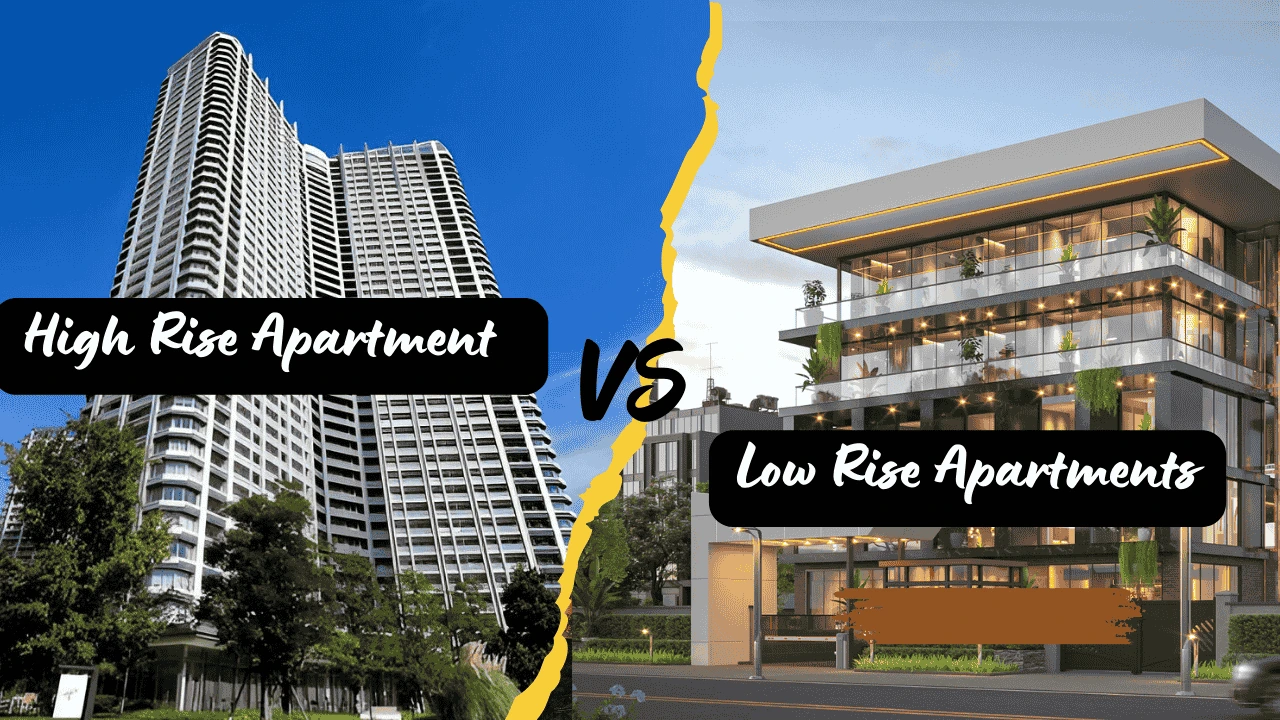Low-Rise vs High-Rise Apartments
Read latest blogs and articles from Housystan

The Information mentioned here was last updated on:
25/11/2025Low-Rise vs High-Rise Apartments: Understanding the Differences and Choosing What’s Right for You
When it comes to choosing a place to live, the type of apartment building can make a significant difference in your daily life. Two popular choices are low-rise and high-rise apartments, each offering distinct living experiences. This blog post aims to break down the key differences between low-rise and high-rise apartments, helping you make an informed decision that fits your lifestyle and preferences.
What is a Low-Rise Apartment?
- Verified Tenants/Buyers
- Unlimited Property Listing
- Zero subscription/charges fee
Definition and Structure
Low-rise apartments are typically buildings with one to four stories. These dwellings often have fewer units compared to their high-rise counterparts, creating a more intimate and accessible living environment. You'll usually find low-rise buildings in suburban areas or mixed-use urban neighborhoods.
Advantages of Living in a Low-Rise
1. Community Feel
Low-rise apartments often foster a strong sense of community. With fewer residents, it's easier to get to know your neighbors, which can create a supportive and friendly atmosphere. This community aspect is a major draw for families and individuals seeking a tight-knit environment.
2. Accessibility
With fewer floors, low-rise apartments generally don’t require the extensive use of elevators. This can be a significant advantage for those who prefer or need easy access to their home, such as the elderly, individuals with mobility issues, or parents with strollers. It also means you can often take the stairs without it feeling like a climb up Mt. Everest.
3. Lower Cost
Low-rise apartments can also be more budget-friendly. They often come with lower maintenance costs due to the lack of elevators and complex systems found in high-rise buildings. Additionally, utility costs might be less because of fewer shared spaces that require heating or cooling.
Disadvantages of Low-Rise Apartments
1. Limited Amenities
One downside of low-rise living can be the lack of extensive amenities. You might not find luxury features like swimming pools, gyms, or rooftop gardens, which are often standard in high-rise buildings.
2. Privacy Concerns
With fewer floors and units, privacy can be more limited. It’s easier for sound to travel between apartments, and common areas might feel less secluded compared to a high-rise.
Understanding High-Rise Apartments
Definition and Structure
High-rise apartments are buildings with five or more stories, often soaring well above that. They dominate city skylines and are typically located in urban centers. High-rises are designed to house many residents, making them ideal for city dwellers.
Benefits of Choosing a High-Rise
1. Breathtaking Views
One of the most enticing features of high-rise living is the view. Living in a towering building often means stunning vistas of the cityscape, ocean, or nearby parks, which can be a daily source of inspiration and relaxation.
2. Abundance of Amenities
High-rise apartments tend to offer a wealth of amenities that enhance convenience and lifestyle. Many feature gyms, swimming pools, concierge services, and shared spaces like rooftop lounges, which can elevate the living experience without ever needing to leave the building.
3. Urban Convenience
Located in the heart of cities, high-rise apartments often provide easy access to public transportation, dining, shopping, and entertainment. This central location is perfect for those who thrive on the hustle and bustle of city life and enjoy having everything at their doorstep.
Potential Drawbacks of High-Rise Living
1. Higher Costs
With great views and amenities often come higher costs. High-rise living can be expensive, not only in terms of rent or purchase price but also due to additional fees for amenities and maintenance. Utility bills might also be higher because of the central heating, cooling, and ventilation systems required for large buildings.
2. Less Personalized Space
In a high-rise building, you might find yourself feeling more like a number than a resident. The sheer number of people living in these structures can make the environment feel less personal and community-focused.
Choosing the Right Option for You
Assess Your Lifestyle Needs
When deciding between a low-rise or high-rise apartment, consider your lifestyle preferences. Do you value a strong sense of community, or are luxurious amenities more important? Would you prefer easy access to the great outdoors and a more suburb-like feel, or is being in the heart of the city your priority?
Consider Location and Commute
Location can play a significant role in your decision. If you work or spend most of your time in a city, a high-rise might make sense. However, if you enjoy a quieter pace, a low-rise in a suburban area might be more appealing.
Budgetary Considerations
Your budget will also dictate your options. Consider not only the upfront costs of rent or a mortgage but also ongoing expenses such as utilities, maintenance fees, and transportation. Understanding what you’re willing to spend will help narrow down your choices.
Evaluate Long-Term Plans
Think about your long-term plans as well. A low-rise apartment could be a better option for those looking to settle down and raise a family, while high-rise living might suit those with a more transient lifestyle or those who wish to downsize after retirement.
Explore Environmental Impact
Consider the environmental impact of your choice. High-rises, while energy-consuming, often support public transport use and less driving due to their urban locations. Low-rise buildings can be designed to be more eco-friendly with less energy consumption per unit.
The Decision-Making Process
Ultimately, the decision between a low-rise and high-rise apartment comes down to weighing the pros and cons in light of your personal needs and circumstances. By understanding what each living arrangement offers, you can better decide which environment will suit your lifestyle, preferences, and budget. Whether you’re drawn to the community feel of a low-rise or the bustling atmosphere and convenience of a high-rise, making an informed choice will lead to a satisfying living experience tailored to you.